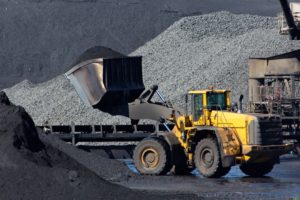
By Andie Anderson
In December of 2019, Time Magazine made a teenage girl the Person of the Year.[1] As a fifteen-year-old, Greta Thunberg began skipping school and standing outside of the Swedish Parliament with homemade signs calling for urgent action on climate change.[2] Within just eighteen months, Greta’s activism would gain international attention and she would go on to eventually address the world in the 2019 United Nations Climate Action Summit.[3]
Punctuated by moments of highly emotional charges, Greta’s speech ignited a global surge in support of greenhouse gas regulation. Greta would go on to meet with the Pope, spar with the President of the United States, and inspire a global strike against climate change.[4] Young people around the world followed her example and began taking action within their own communities. In 2019, a group of twenty-one American high school students filed suit against the federal government, asking for immediate action on climate change and greenhouse gas regulation.[5]
The students’ suit presents an important question under American law. In the face of an executive branch who refuses to acknowledge the reality of climate change, what role can the courts play to advance regulation of greenhouse gases and mitigate temperature increase?
The Supreme Court has previously allowed suits against the federal government over greenhouse gases and climate change. In Massachusetts v. EPA, a group of states, local governments, and environmental actors brought suit against the Environmental Protection Agency (EPA), alleging it acted arbitrarily in denying a petition for rulemaking.[6] In October of 1999, fifteen organizations filed a rulemaking petition to the EPA, asking it to regulate greenhouse gases.[7] Fifteen months later, the EPA requested public comment on the petition for rulemaking.[8] Two years after the comment period, and despite the EPA issuing a report that human generated greenhouse gases caused global temperate increases, the EPA denied the rulemaking petition.[9] In its denial, the EPA explained that regulating carbon dioxide and other greenhouse gases was unwise considering the charged political nature of the decision.[10] The petitioners brought suit against the EPA, arguing it failed to give a statutorily required reasoned basis for its decision to decline rulemaking.[11]
The EPA challenged the standing of the individual plaintiffs to bring suit.[12] The EPA argued that under the modern Constitutional standing rule, a plaintiff must show that they suffered “a concrete and particularized injury that is either actual or imminent, that the injury is fairly traceable to the defendant, and that it is likely that a favorable decision will redress that injury.”[13] Under the doctrine of Constitutional standing, the harm must be individualized.[14] Individuals who are merely vindicating the public’s general interest in the proper administration of the law do not have standing to sue.[15]
The EPA argued that, because the harm of global warming and its failure to act “inflicted widespread harm” and not individual harm, the plaintiffs could not have standing.[16] The Supreme Court disagreed. The Supreme Court pointed out that the Administrative Procedures Act (APA) authorized lawsuits against agencies without the need to meet the “normal standards for redressability and immediacy.”[17] Instead, Congress authorized statutory standing to those that bring a “challenge the rejection of its rulemaking petition as arbitrary and capricious.”[18] The Supreme Court held that because the APA authorized a lawsuit for the EPA’s failure give a reasoned basis for its refusal to promulgate a rule on carbon dioxide, the plaintiffs had standing to sue.[19]
The result of the Massachusetts decision was a remand to the EPA for further proceedings.[20] If the agency wanted to decline the petition for rulemaking, it would need to provide a reasoned basis as required by the APA. However, by the time the Supreme Court issued its decision, Obama won the presidency and took office. Compared to the previous administration’s hostility towards climate change,[21] this new administration was willing to embrace scientific evidence of human activity in temperature increase and regulate relevant gases.[22] On remand, the Obama-era EPA began procedures to promulgate a rule regulating carbon dioxide emissions.[23]
When President Trump took office in 2017, the United States again re-entrenched itself in climate change denial.[24] The Sabin Center for Climate Change Law tracks Trump administration actions on climate change in a Climate Deregulation Tracker.[25] To date, the current administration has taken over 130 actions de-regulating greenhouse gases.[26]
In this climate era, twenty-one students filed a lawsuit against the President, his cabinet, and the EPA, asking for action on climate change.[27] The high schoolers charged the federal government with intentionally encouraging the consumption of fossil fuels and the production of greenhouse gases, despite knowing of the risks of global warming.[28] The appellate court described the scientific record submitted by plaintiffs as “extensive” and leaving “little basis for denying that climate change is occurring at an increasingly rapid pace” as a result of human activity.[29] The teenagers claimed that the federal government’s contribution to climate change violated their due process rights, the right to equal protection under the law, rights under the Ninth Amendment, and the public trust doctrine.[30] The high schoolers sought for declaratory and injunctive relief, asking the court to order to government to implement a plan phasing out all fossil fuel emissions and drawing down excess atmospheric greenhouse gases.[31]
The Ninth Circuit reluctantly concluded that injunctive relief was beyond its constitutional power to grant because the plaintiffs lacked standing to sue.[32] Unlike the plaintiffs in Massachusetts, the students in Juliana did not bring a challenge under the APA. Thus, in order to obtain injunctive relief, the students needed to meet the more rigorous standards of injury and redressability under Constitutional standing.[33] The court found that plaintiffs met the injury requirement of standing by pleading personal and particularized injuries.[34] One plaintiff had to leave her home in the Navajo reservation because of water scarcity, another had to leave her home because of persistent coastal flooding.[35] However, plaintiffs’ claim failed as to court redressability.[36] For the sake of standing analysis, the court assumed that there was a substantive right to “a climate system capable of sustaining life.”[37] Because enjoining the government would prevent it “from exercising [its] discretionary authority granted by congress,” court intervention would pose a substantial interreference with the co-equal political branches of the government.[38] In the end, affirmative action to address climate change presented a political question, and was not within the authority of the judicial branch to resolve.[39]
Massachusetts and Juliana teach a valuable lesson on the role of courts in in the
climate change fight. Massachusetts is proof that courts may be a vehicle to
propel federal action. However, even if a healthy climate is a substantive
right, the method for achieving it is a political question. Thus, as Juliana teaches, any successful lawsuit
must not rest on the violation of a substantive right, but procedural one. In
the future, activists should watch federal agencies closely, stay involved in
the development and repeal of regulation, and bring suit under the provisions
of the APA.
[1] Charlotte Alter, Suyin Haynes, & Justin Worland, Time 2019 Person of the Year: Greta Thunberg, Time, https://time.com/person-of-the-year-2019-greta-thunberg/.
[2] Id.
[3] Id.
[4] Id.
[5] Juliana v. United States, 947 F.3d 1159 (9th Cir. 2020).
[6] Id. 549 U.S. 497 (2007).
[7] Id. at 510.
[8] Id. at 511.
[9] Id. (citing 68 Fed. Reg. 52922 (Sept. 8, 2003)).
[10] 68 Fed. Reg. at 52929–31. Note, the EPA also argued that, despite its previous stance on the interpretation of the Clean Air Act, the act did not actually included carbon dioxide and other greenhouse gases. Massachusetts, 549 U.S. at 511. The court ultimately found against EPA on this matter, and held that the statute did authorize to EPA to regulate greenhouse gases. Id. at 528.
[11] Id.at 514.
[12] Id. at 517.
[13] Id.
[14] Id. at 516.
[15] Id. at 516–17.
[16] Id. at 517.
[17] Id. at 517–18 (citing U.S.C. § 7607(b)).
[18] Id. at 520 (citing U.S.C. § 7607(b)(1)).
[19] Id. at 518.
[20] Id. at 535.
[21] Andrew Grice, Bush to G8: ‘Goodbye from the Worlds Biggest Polluter’, Independent (July 10, 2008), https://www.independent.co.uk/news/world/politics/bush-to-g8-goodbye-from-the-worlds-biggest-polluter-863911.html.
[22] The Record, Climate, The White House, President Barack Obama (last visited Feb.18, 2020), https://obamawhitehouse.archives.gov/the-record/climate.
[23] 74 Fed. Reg. 66496 (Dec. 15, 2009).
[24] See, e.g., Helier Cheung, What Does Trump Actually Believe About Climate Change?, BBC News (Jan. 23, 2020), https://www.bbc.com/news/world-us-canada-51213003.
[25] Climate Deregulation Tracker, Columbia Law School (last updated Jan. 16, 2020), https://climate.law.columbia.edu/climate-deregulation-tracker.
[26] Id.
[27] Juliana, 947 F.3d at 1165.
[28] Id. at 1166–67.
[29] Id. at 1166.
[30] Id. at 1165.
[31] Id.
[32] Id.
[33] Id. at 1168.
[34] Id.
[35] Id.
[36] Id. at 1169.
[37] Id.
[38] Id. at 1170–72.
[39] Id. at 1173.


